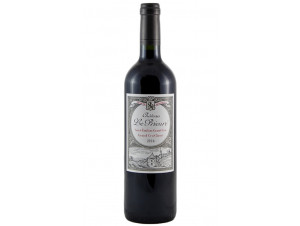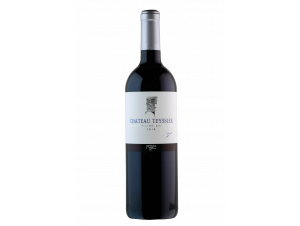You have no items in your shopping cart.
Wine Saint-Émilion Grand Cru
The Saint-Émilion Grand Cru appellation is spread over 9 communes in the Libourne area and extends over eight kilometres in length and five kilometres in width to the east of Libourne. It differs from the other Saint-Émilion AOCs in its specifications, but covers the same territory. It was listed as a UNESCO World Heritage Site in 1999. Read more on Saint-Émilion Grand Cru
-
Top Selling
-
Top Selling
-
Top Selling
- -26%
- -25%
- -25%
- -35%
- -25%
- -40%
- -17%
Appellation Saint-Émilion Grand Cru
The Saint-Émilion Grand Cru is France's leading wine union
The vineyard of the Saint-Émilion area already existed in the 1st century BC. The religious orders largely developed the vineyards and contributed to their development. In the 12th century, the marriage of Eleanor of Aquitaine and Henry Plantagenet allowed a flourishing wine trade to England, administered by the Jurade de Saint-Émilion (a brotherhood of Saint-Émilion wines created in 1199 by John Lackland, King of England). It continued to expand until the phylloxera crisis at the end of the 19th century, which hit all French vineyards.
In reaction to the crisis, a wine union was created, the first of its kind, in 1884. Finally, the first classification of Saint-Émilion wines was validated in 1955. It is revised every 10 years, and thus offers a guarantee of the exceptional quality of these wines. The 2012 classification is the 6th to date. At the top of the list: 64 grands crus classés out of 82 properties, and 18 premiers grands crus classés.
Saint-Émilion Grand Cru has a very demanding specification
Sharing its appellation area with Saint-Émilion, AOC Saint-Émilion Grand Cru runs along the Dordogne River on its right bank. Nevertheless, its specifications are stricter: its yield is limited to 40 hectolitres per hectare, the ripeness of the grapes must be higher and a maturation of 12 months is mandatory. The wines must be bottled at the property and a double tasting is the rule. According to the 1855 classification, which is revised every 10 years for the Saint-Émilion appellation, the appellation has two Grand Cru Classé A, and 11 Grand Cru Classé B. Galleries dug into the limestone beneath the appellation area, used as cellars, offer ideal properties, allowing the wine to be kept at temperatures between 12° and 16°.
The climate of the vineyard is temperate oceanic, mild and humid. The soils on which it lies date from the Tertiary and Quaternary periods. The subsoil is composed of marine sedimentary rocks topped by clay deposits, which were deposited there 35 million years before our era. Then marine deposits form the limestone plateau which covers part of the Libournais region and in particular the asteriated limestone which houses the famous Saint-Émilion wine cellars. To the east, and in the centre of the plateau, there is an alternation of sandy-clay and gravelly, clayey-silt and sandy-gravelly soils.
Saint-Émilion grand cru rests on 4,030 hectares of chalky, clay-silt and sandy soils. It is the merlot that amply dominates the blends. But cabernet franc and cabernet-sauvignon are also part of the mix. The appellation produces around 150,291 hectolitres of red wine per year.
The colour of the Saint-Émilion grand cru has ruby tinged garnet highlights. The nose is more complex than that of the Saint-Émilion, and also finer. It opens with notes of red fruit, prune, peony. It gradually reveals itself, gradually offering notes of breeding, cocoa beans, toast, almond, cedar and sandalwood.
On the palate it is very dense, the tannins are fine and deep with grain, the material is supple and the finish is very long. They have an exceptional ageing potential, more than 50 years for some grands crus. They can be enjoyed with refined and very typical dishes such as game, dishes with foie gras or truffles, and dishes garnished with ceps. A carafage beforehand is strongly recommended. It is best served at 16°.
The 2005 vintage is the vintage of the millennium for Saint-Émilion Grand Cru
.The appellation is distinguished by a large number of vintages. The years 1929 and 1982, particularly exceptional, have obtained the distinction of millesime of the century. And crowned best of all, the 1990 and 2005 are designated as the vintage of the millennium. Nevertheless, 2004, 2006, 2008 and 2010 are also considered excellent years.
Saint-Émilion Grand Cru, châteaux with a centuries-old reputation
Chateau Figeac
Its existence dates from around the 2nd century BC. It is the largest estate in Saint-Emilion with 54 hectares, 40 of which are vineyards. On the edge of Pomerol, the vineyard in the Saint-Emilion appellation is classified as Premier Grand Cru Classé B in the 2006 classification. It is one of the few vineyards in the appellation that rests on gravel, which allows it to have good drainage. Its grape varieties are also different from those of other AOC estates, with a predominance of Cabernet Sauvignon at 35%, Cabernet Franc at 35% and Merlot at only 30%.There is a particularity for the parcels of Château Figeac. Indeed, shared with those of Château Cheval Blanc, Château Figeac differs by its soil mostly formed of Günzian gravel, allowing a good drainage. The estate practices reasoned culture and the wine is aged in 100% new barrels. Its latest great vintage was 2014.
Château Angélus
Jean de Boüard de Laforest moved to Château Angélus in 1782. The current owners, Stéphanie de Boüard-Rivoal and her cousin Thierry Grenié-de Boüard, are his direct descendants from a long line of winegrowers. The 39-hectare vineyard, 27 of which are classified as Premier Grand Cru Classé A, has an unusual variety, with almost 50% Cabernet Franc. Grand cru classé A at the last Saint-Émilion classification in 2012, Hubert de Boüard's hard work, has paid off. Thierry Grenié-de Boüard took over from him in 2017 and joined Stéphanie de Boüard-Rivoal at the head of the château.Angélus exemplifies the best of the formal and sophisticated perfection of today's great Bordeaux. It is a successful transition as the estate has been steadily building up the vintages over the past few years.
Château Cheval Blanc
The existence of vineyards at Cheval Blanc is attested to as early as the 15th century. But the estate really took off in 1832, when it was bought by Jean-Jacques Ducasse, president of the Libourne court. His daughter Henriette then married Jean Laussac-Fourcaud, a wine merchant in Libourne, who helped define the identity of the estate. He undertook renovation work and created a network of walled and covered drains.He undertook around the 1860s a change in the grape varieties, which were now made up of half Merlot and half Cabernet Franc. At the time of the classification of the wines of Saint-Emilion in 1954, Saint-Emilion obtained the classification of Premier Grand Cru classé A, a consecration!
Bordeaux appellations











































 TWIL - Achat de Vin
TWIL - Achat de Vin


